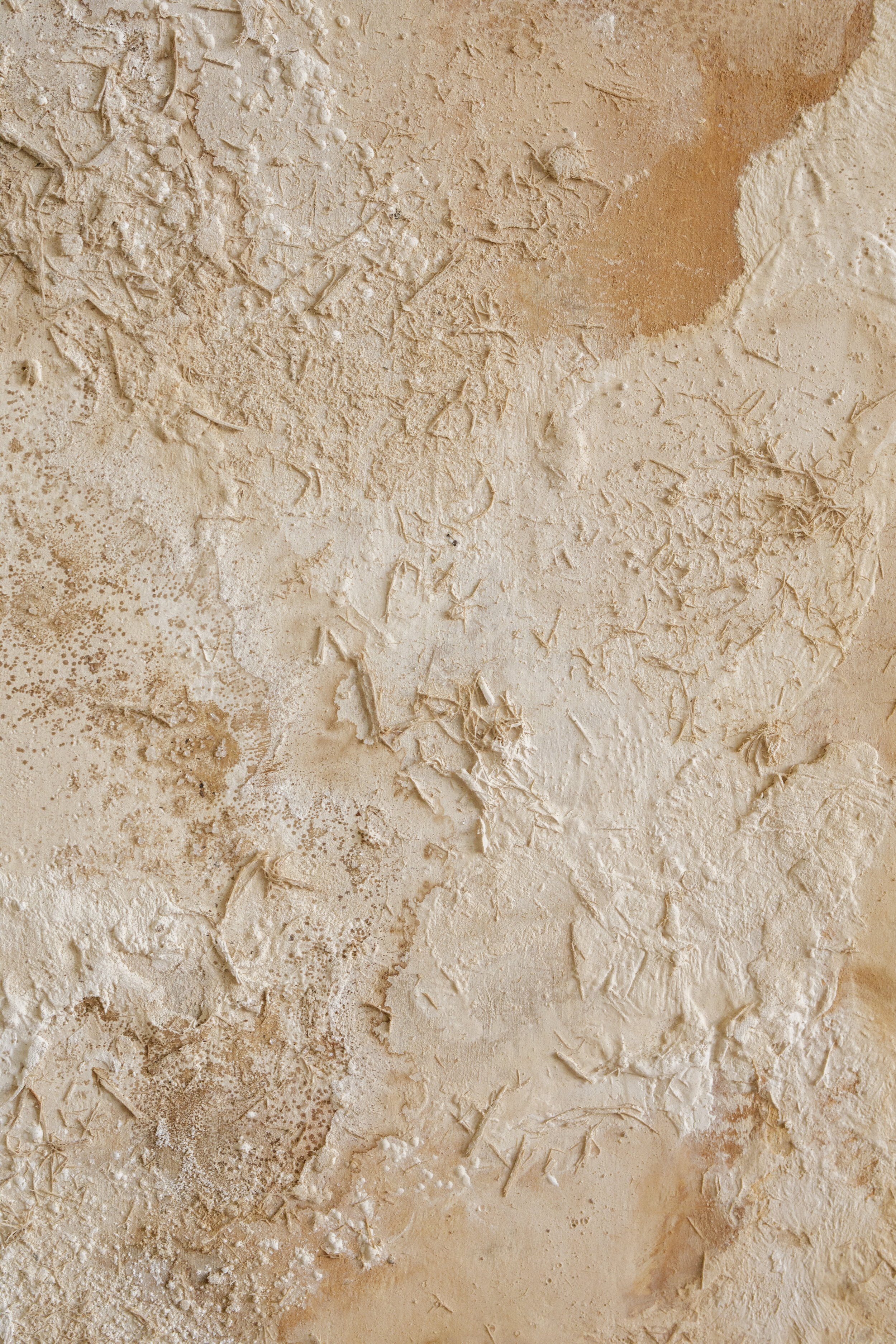
Y A S U N A I M A N
Yasuna Iman is a multidisciplinary artist developing an abstract visual language on sculptural handmade paper, wood and canvas— with the use of soils, minerals, botanical pigments and other raw materials sourced from the natural world.
From her home studio in Berlin, Iman creates wall sculptures called ‘Paperscapes’ and textured paintings called ‘Earthmaps.’ Each artwork is composed of various organic ingredients, including maple fibres and dyes, chalk, rust, wild clay, lime, cotton, salt and sand. These natural materials intermingle on the surface to form impressive multidimensional landscapes, emulating geological strata, topographic maps and dramatic aerial views of the earth.
Placed up on a wall, Iman’s tactile artworks invite touch, drawing spectators into close proximity with them. Viewers are often compelled to reach out, to feel the surface for its irregular contours and currents, running their hands along its innumerable ridges and valleys. The result is a powerful sense of encounter, where the boundary between body and art, human and non-human, is made to feel loose and permeable. For Iman, this intimate sense of connection with the earth is vital and at the heart of her creative practice:
“It is so meaningful for me to create work that doesn’t just sit at a distance, in the background, but invites interaction: allowing people to get close, to feel, observe and move around… to experience nature’s presence inside their homes.”
— YASUNA IMAN
Iman’s artworks quite literally bring the outside in. Each piece is shaped by continuous close contact with the natural environment. Her artistic process begins in the local forest, foraging for fallen tree branches and other organic materials. These fibres are then worked solely by hand, as she slowly and intuitively transforms raw matter into surface, into paint. It is a slow, contemplative process wherein time feels abundant.
Iman first discovered botanical pigments during a time of intense personal change and upheaval, having moved from Paris to Berlin in her early twenties, before she was able to speak a word of German. “Everything felt unfamiliar and unsettling,” she reflects, “and then I discovered botanical pigments. It was incredible to find a medium that carries within itself exactly what it was that I was going through at the time. She explains, “Botanical pigments: they don’t last, for the most part. And even when more lightfast, they will still change to an extent. There’s just no way to make them permanent. It’s just not in their nature. And it’s exactly the same with us and it’s the same with everything that’s around us—even the things that we perceive as permanent, actually can and do change.”
This sense of impermanence pervades Iman’s oeuvre. Embodying transience by virtue of its organic composition, her work communicates a profound sense of belonging to the natural order—to cycles of growth and decay, life and death. “From plant to pigment, fiber to paper… my work hints at the multitude of transformations we experience in a lifetime,” Iman writes in one of many philosophical meditations that accompany and enrich her art. “The act of moving the artwork over the wall or witnessing its pigment age over time, opens a space to remember our own transient nature, as we marvel at the life which grows and dies around us.” For Iman, then, impermanence is not simply a condition to mourn, but a shared natural state that opens out to wonder, reconnecting us to our roots in the earth.
Iman’s own sense of belonging has been enlarged by her migrations and by the deeply embodied nature of her art practice: “For me, home can never be just one place. It’s plural. Especially working so closely with nature… I think that I would feel at home anywhere where I can put my hands on the soil.” It is just this sense of connectedness with the larger natural world that is so powerfully conveyed through her work. Paperscapes and Earthmaps invite the beholder into a space of intimacy with planet Earth, which is encountered neither as permanent sanctuary nor unassimilable other, but as our endlessly unfolding home.
—
artwork by Yasuna Iman
photography by Johannes Berger
essay by Jo Ward






